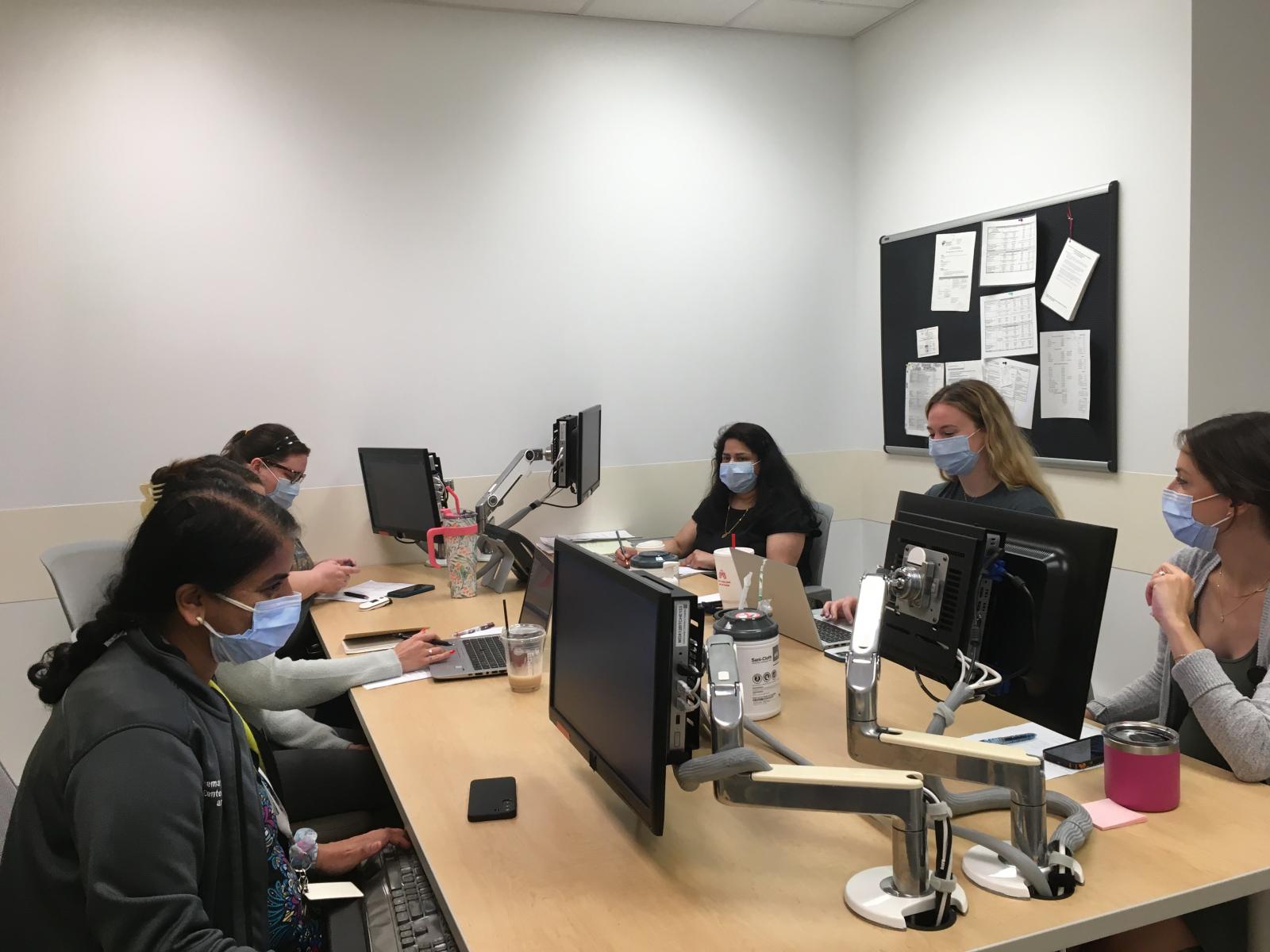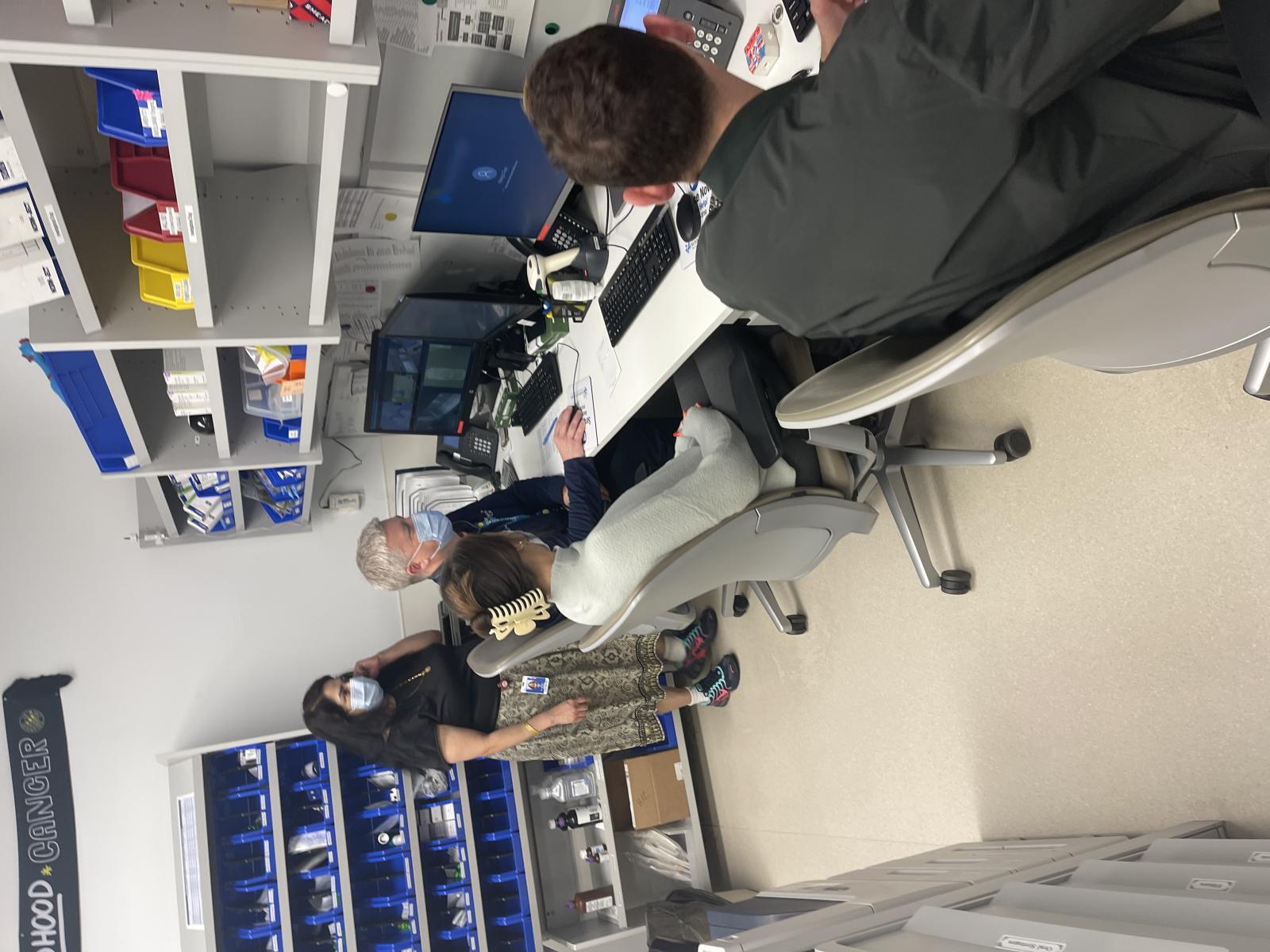Navigating pediatric critical care on an interprofessional team

Pediatric care can be challenging but having a specialized pharmacist on the team helps to alleviate a few common difficulties.
You can find Advanced Patient Care Pharmacist Dr. Vinita Pai at the Hematology, Oncology and Bone Marrow Transplant (BMT) unit of Nationwide Children's Hospital (NCH) in Columbus, Ohio. Vinita Pai, PharmD, MS, BCPPS is an associate professor of pharmacy practice and science at the College of Pharmacy and focuses on pediatric patients who are admitted to BCH for a BMT.
Starting the day
Dr. Pai starts each day by interacting with a team of health care professionals at a pre-rounding meeting before she and the health care team begin their patient-centered rounds. The team reviews and discusses any overnight events that occurred for their patients, along with lab tests, vital signs, intake/output and current medications to develop a treatment plan for the day.
Among the team in the pre-rounding meetings are BMT physicians, infectious disease physicians, nurse practitioners, nurses, pharmacists like herself, physician and pharmacy residents, Advanced Pharmacy Practice Experiential (APPE) students, and sometimes social workers.
These meetings are critical because the team members combine their expertise to determine the best plan for each child. The individualized care plan is reviewed with the parent/caregiver or the patient during patient-centered rounds. It is important that all members of the team work together because there is an added challenge that all patients under their care are immunocompromised.
The value she brings as a pharmacist
- Most drugs are approved for adults and therefore dosing is not available until studied specifically in children.

How medications affect children is very different from how they affect adults. The team relies on Dr. Pai’s expertise when starting a medication not commonly used in children.
“The toxicity levels are different compared to adults – how much and how often medications can be given are different; the effects of the medication can also show up differently in children,” Dr. Pai said. “Because medical, nursing and pharmacy schools mainly focus on adult medicine, I play an important role as a pharmacist in helping my team. I consult on the differences between how adult and pediatric populations handle the same drug and I can tell them what to expect.”
But dosing isn’t the same for every child. Age and weight play a significant role. Drug dosing is drastically different in a newborn baby compared to a child over a year old; a newborn handles (absorbs, distributes, metabolizes and eliminates) drugs differently than children over a year old. Weight is a big consideration because most drugs are dosed on a milligram-per-kilogram basis, so doses of the same drug will be different for a 25kg child versus a 50kg pre-teen.
- Many children cannot take a solid dosage form; they may be too young to swallow tablets or capsules.
If there is no liquid form of medication, Dr. Pai will consult physicians, nurses and parents on how to successfully give children their medications. If there is an extemporaneously compounded stable liquid form, pharmacists at NCH will compound it for their patients. If such a formulation is not available, sometimes medications can be crushed or split and added in a small amount of the patient’s favorite drinks or foods. This makes administering them to children easy. If the medicine can’t be crushed or split, the health care team relies on Dr. Pai’s expertise to find alternative solutions.
Research helps other pediatric health care providers
Dr. Pai and the rest of the BMT health care team often collaborate to publish research articles so that other pediatric BMT health care providers can benefit from their experiences on common issues.
“These questions are unique to the pediatric BMT population and interprofessional work is warranted to come up with the best solution,” Dr. Pai said. “We pharmacists bring our knowledge of drug therapy, pharmacokinetics (drug metabolism and elimination), pharmacodynamics and pharmacogenomics, and we play a key role in this interprofessional setting to achieve the best outcomes for our patient.”
Training students
Dr. Pai typically takes on two APPE students a month and helps to train pharmacy residents. This gives the trainees a peek into her world and how the team interacts.
“The attending physicians get excited when they see pharmacy students and residents,” Dr. Pai said. “The physicians will introduce themselves and the students and residents tell them how excited they are to learn and ask what topics they’d like to explore.”

From these conversations, Dr. Pai builds presentations for the students and residents to learn about different drug topics as they present to the team. These presentations are especially important because this may be a student pharmacist’s first exposure to pediatrics outside their pharmacy school training.
The physicians and nurse practitioners will also contribute to the pharmacy students' learning experience as part of the BMT team.
Dr. Pai also advises medical residents while filling out pharmacy orders.
Pharmacy on health care teams
Even with the added challenges of pediatric care, her role still functions as a normal pharmacist’s position would.
Dr. Pai answers questions from her health care team related to pharmacy, including medication and dosing recommendations, and has built guidelines for her team to reference as they prescribe, order and administer medications.
She also checks medication accuracy for all the BMT prescriptions and keeps track of drug levels daily.
“I’ve done this for 19 years and the BMT interprofessional team is typical of an in-patient team at Nationwide Children’s Hospital,” Dr. Pai said. “There’s me as a pharmacist working as part of a whole team of other professionals to optimize patient outcomes. Pharmacists are one very important part of all health care teams, especially this one.”